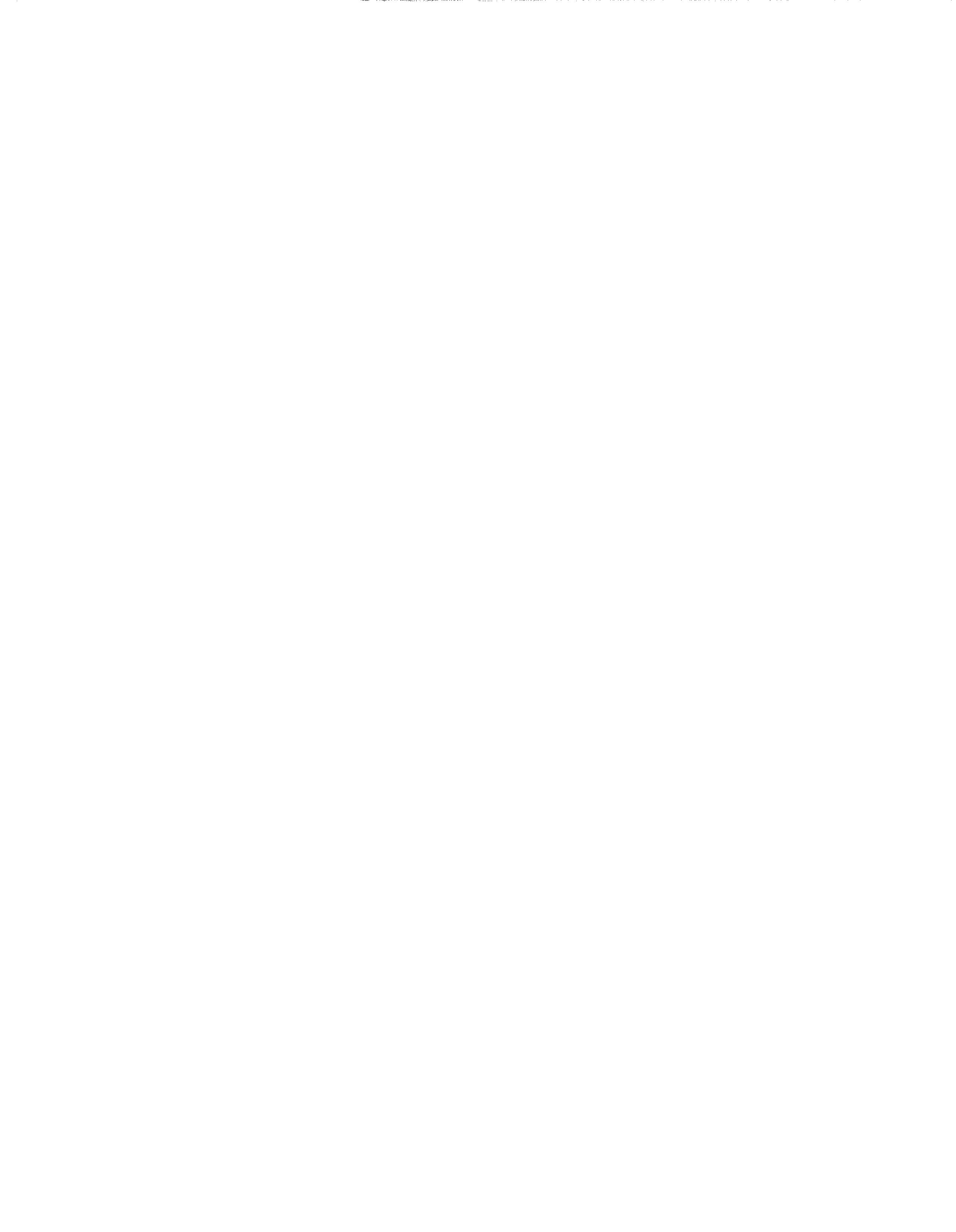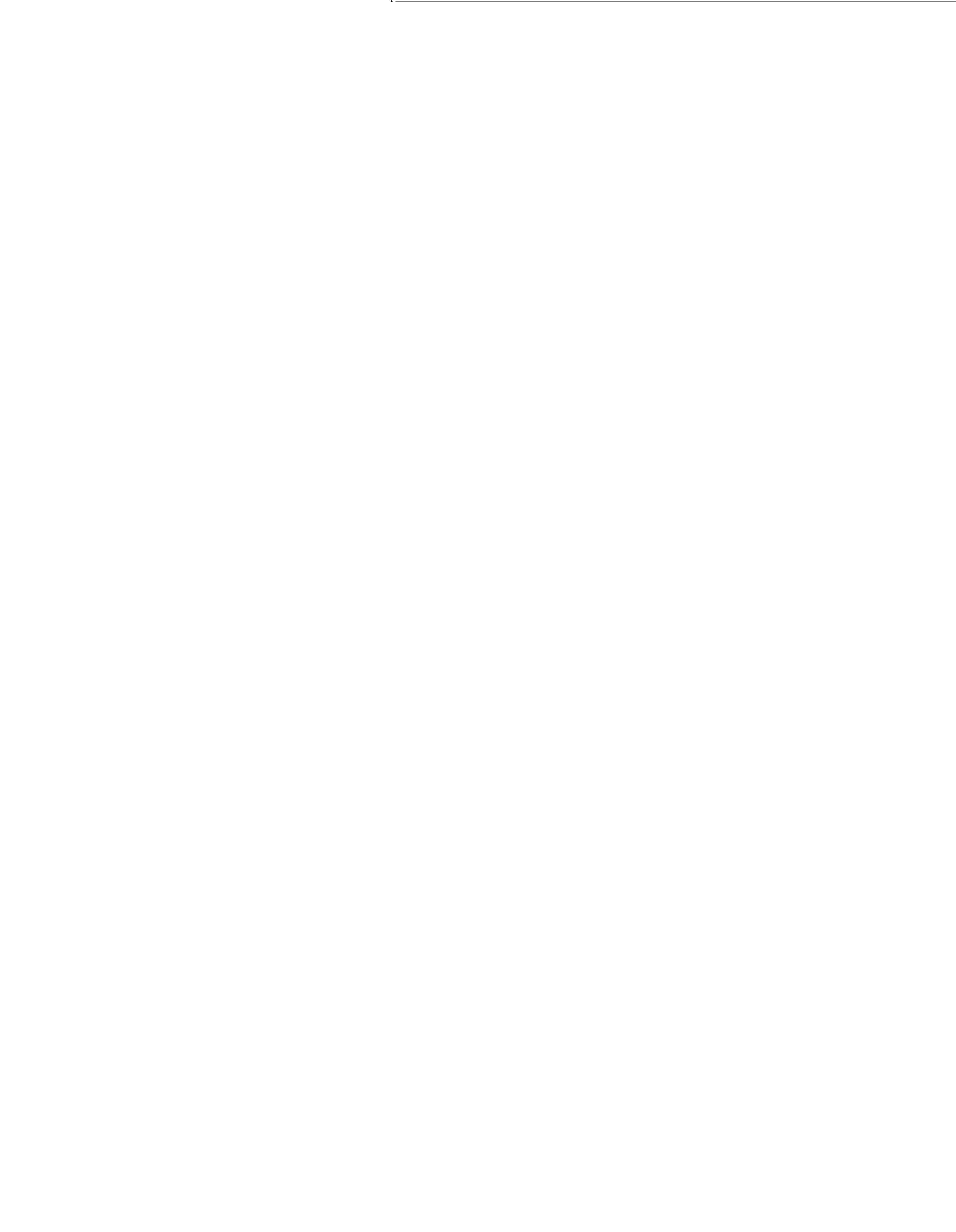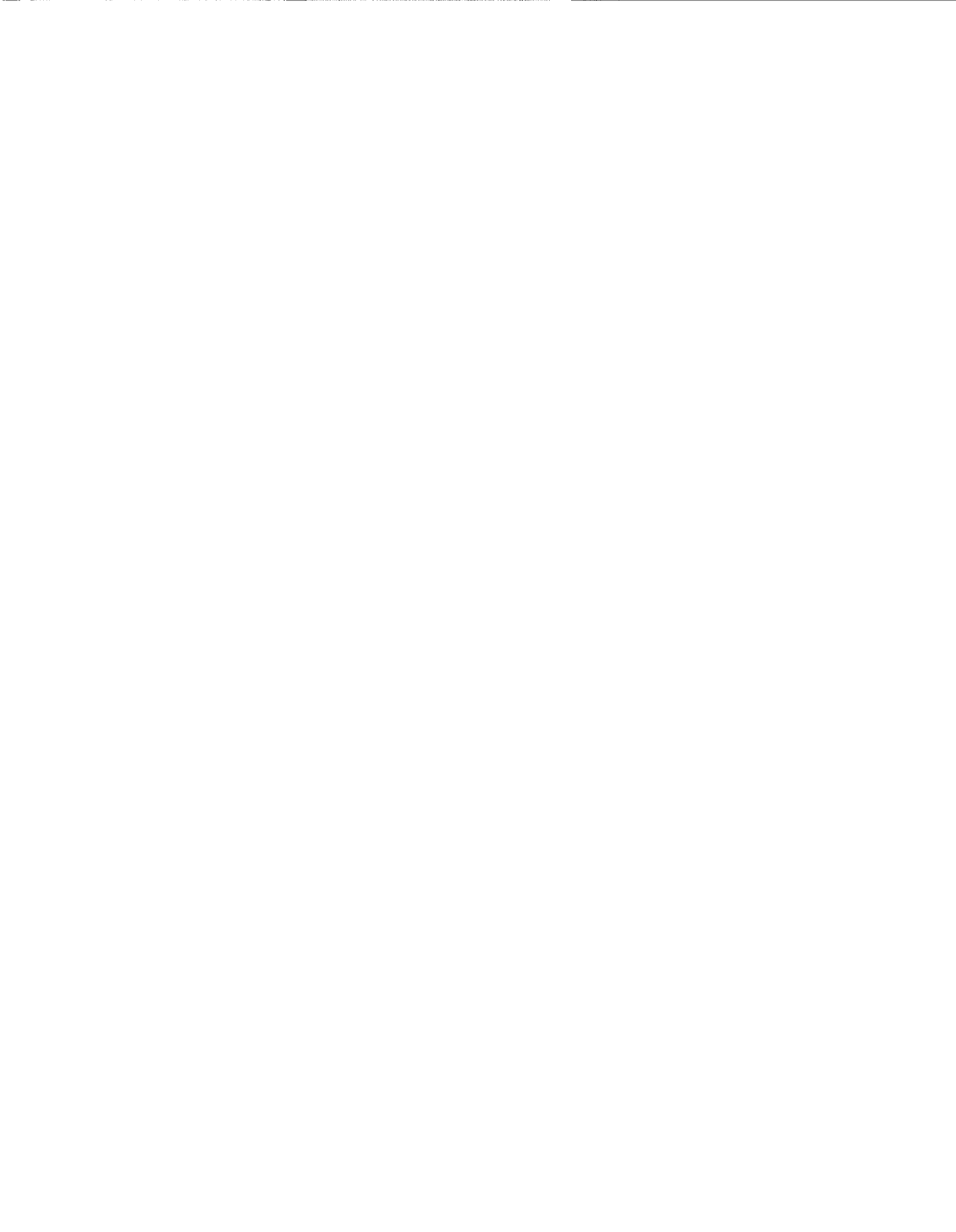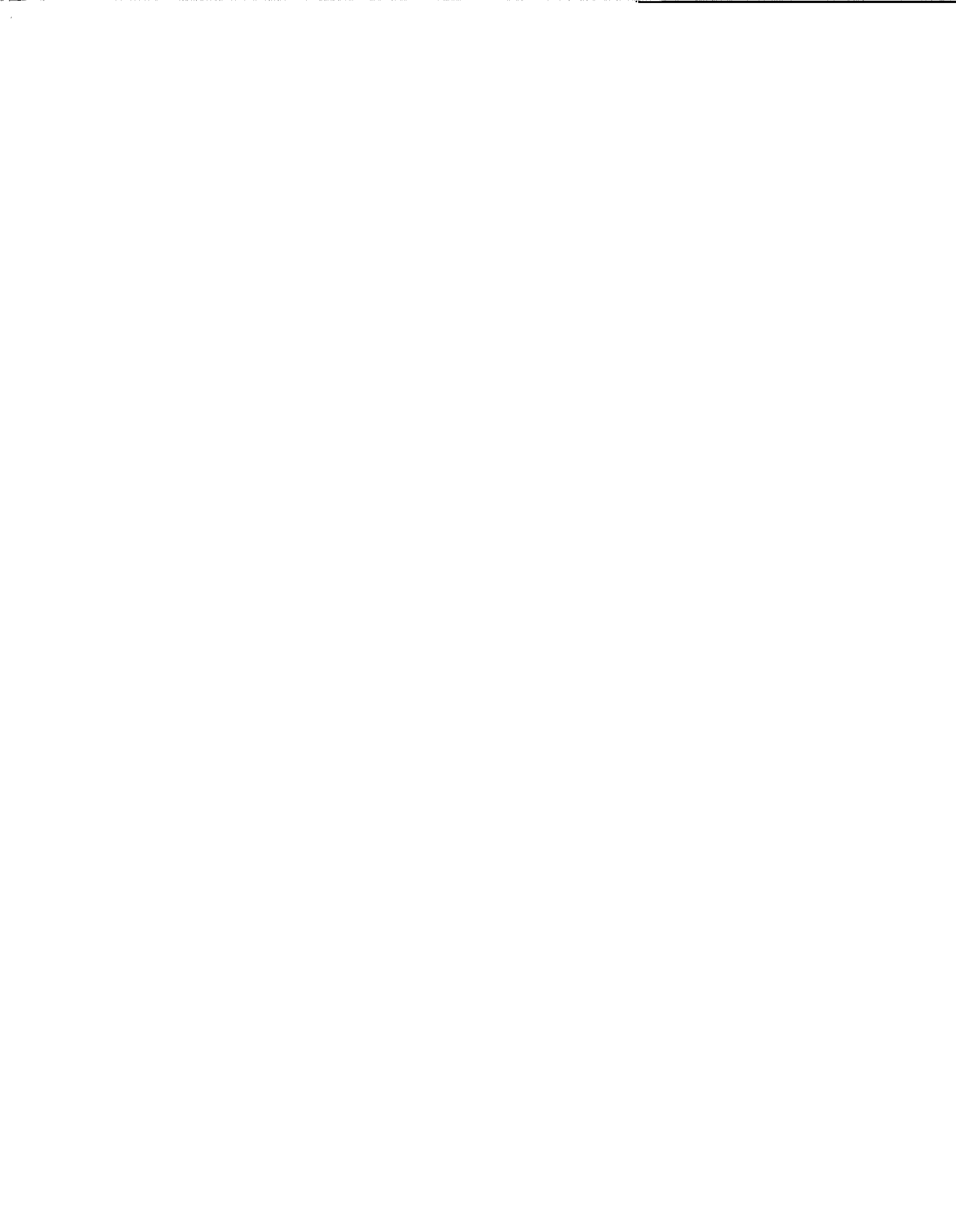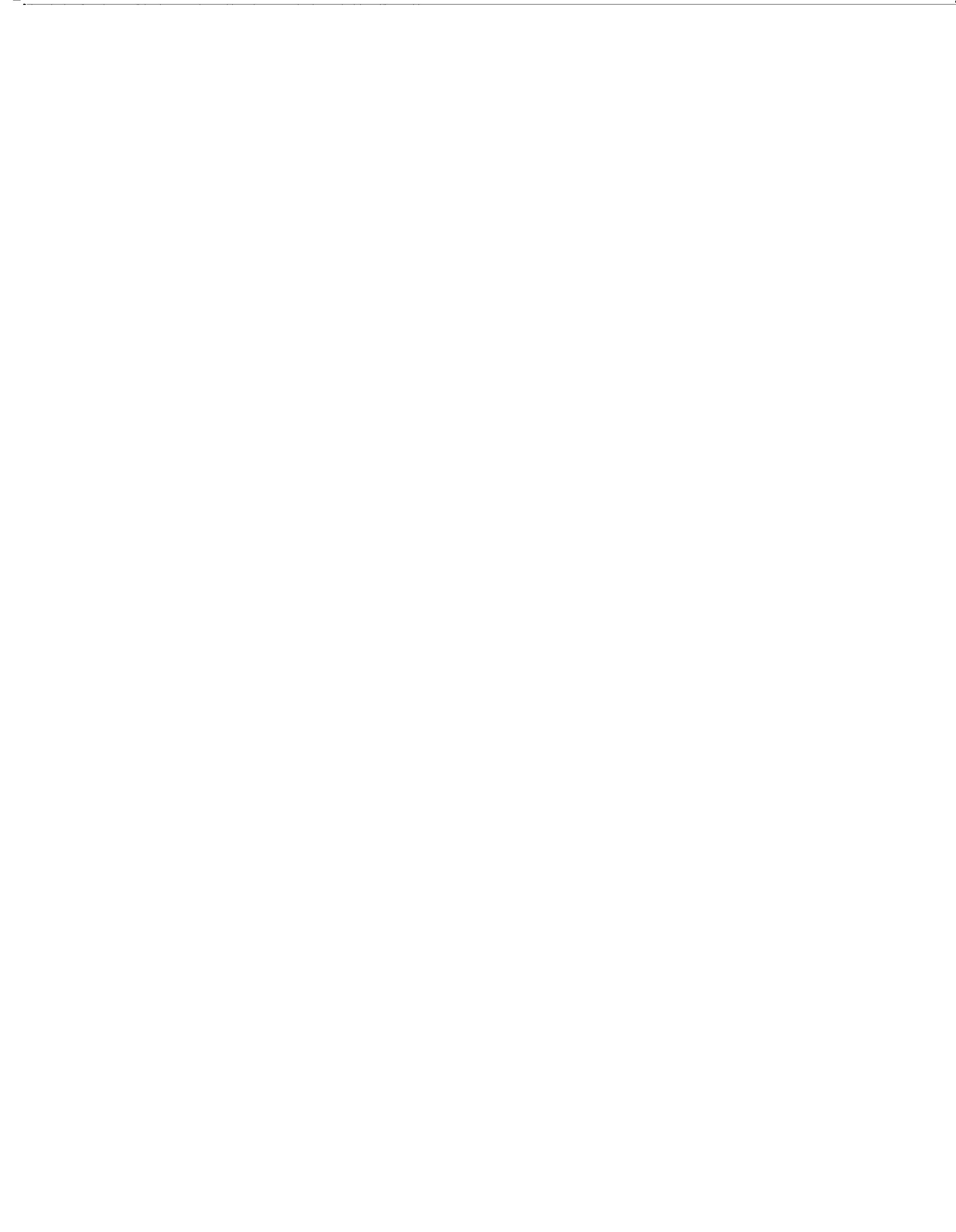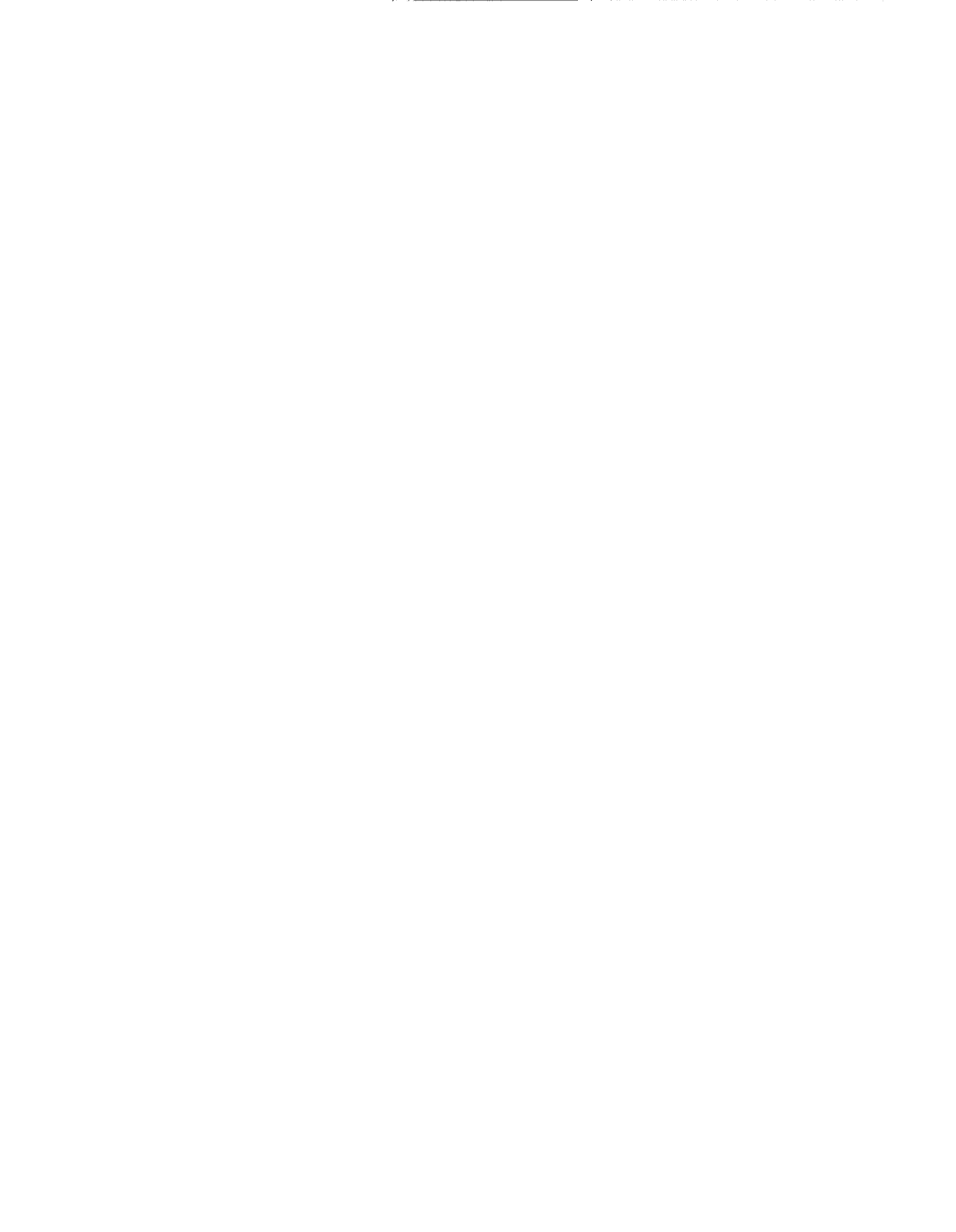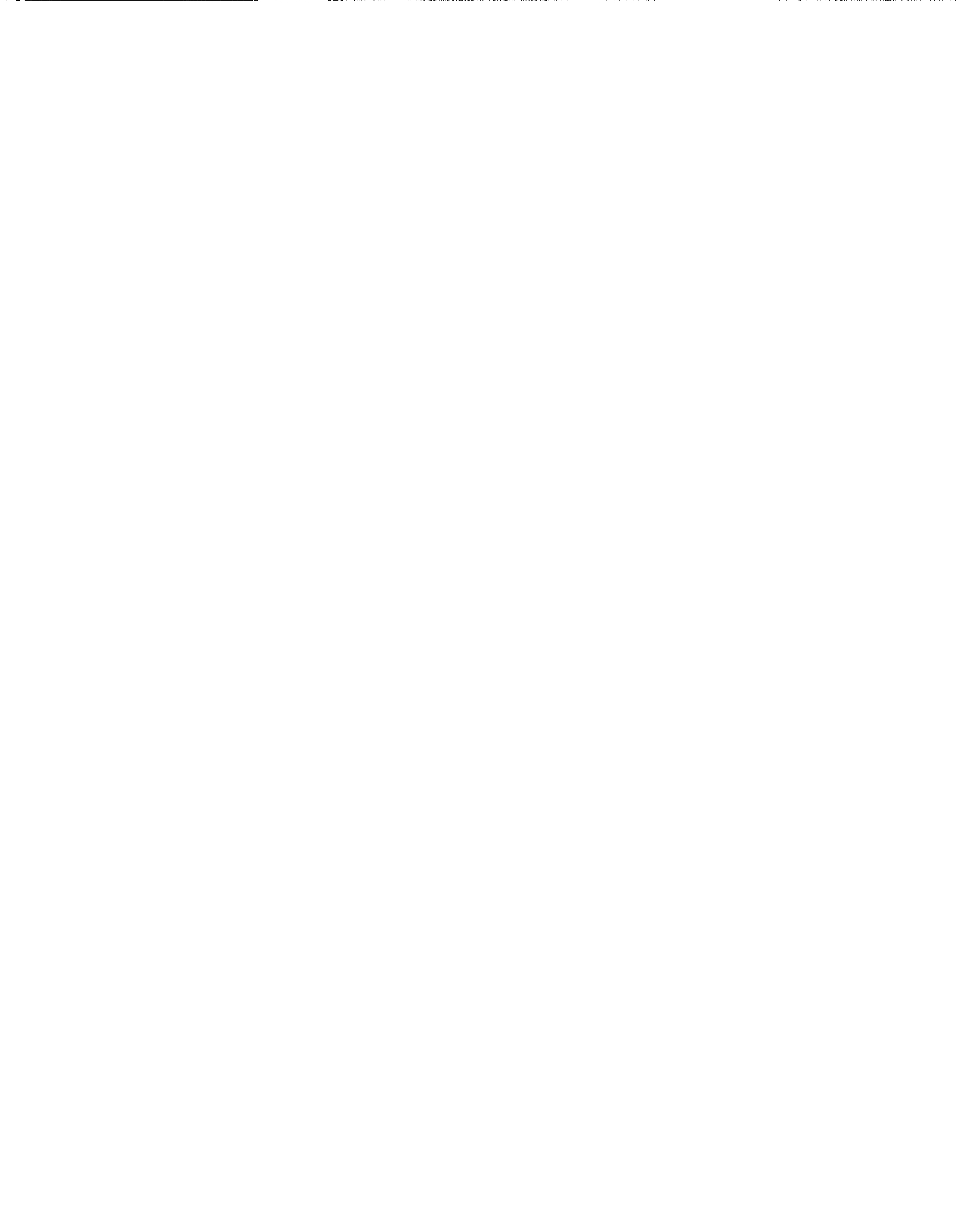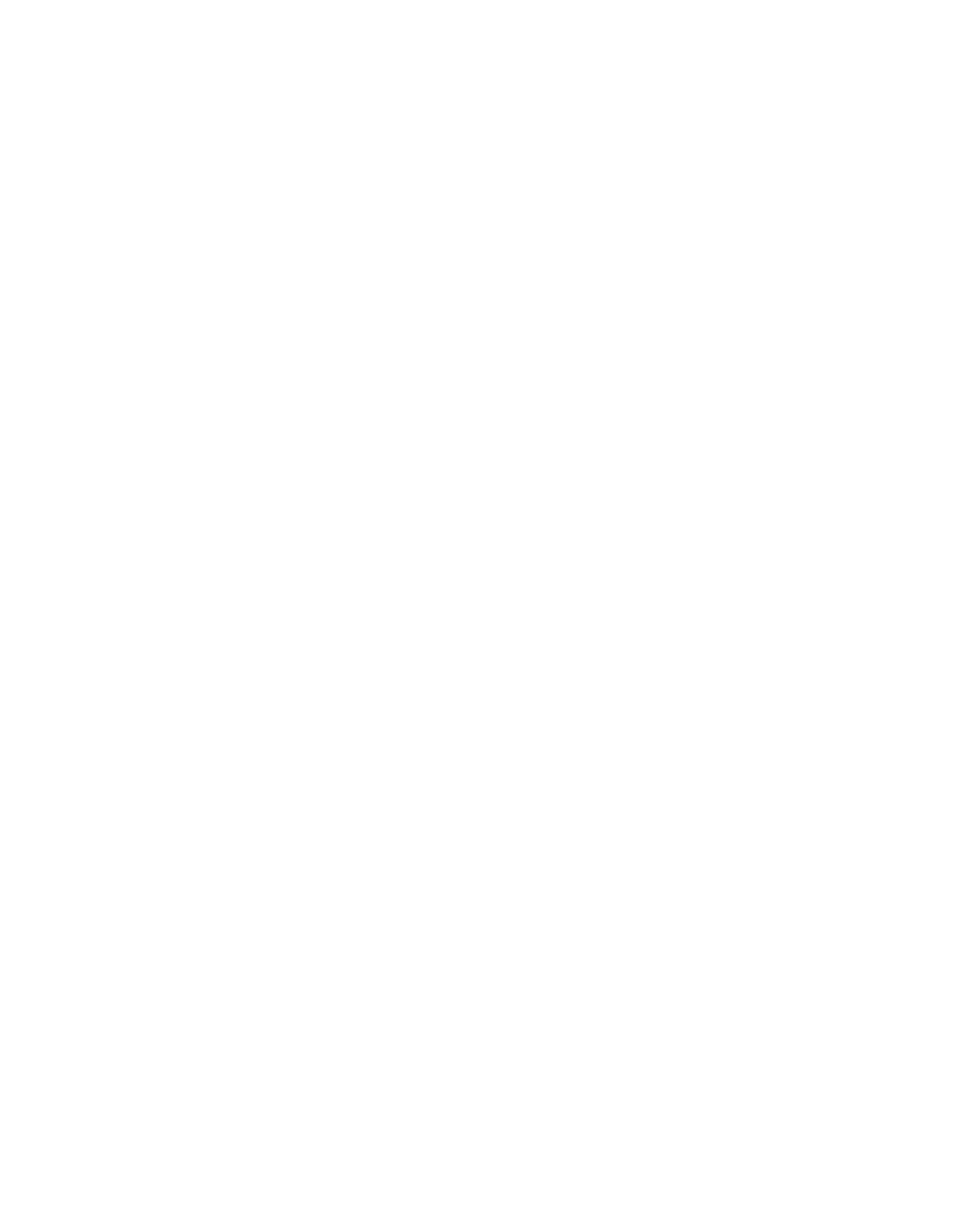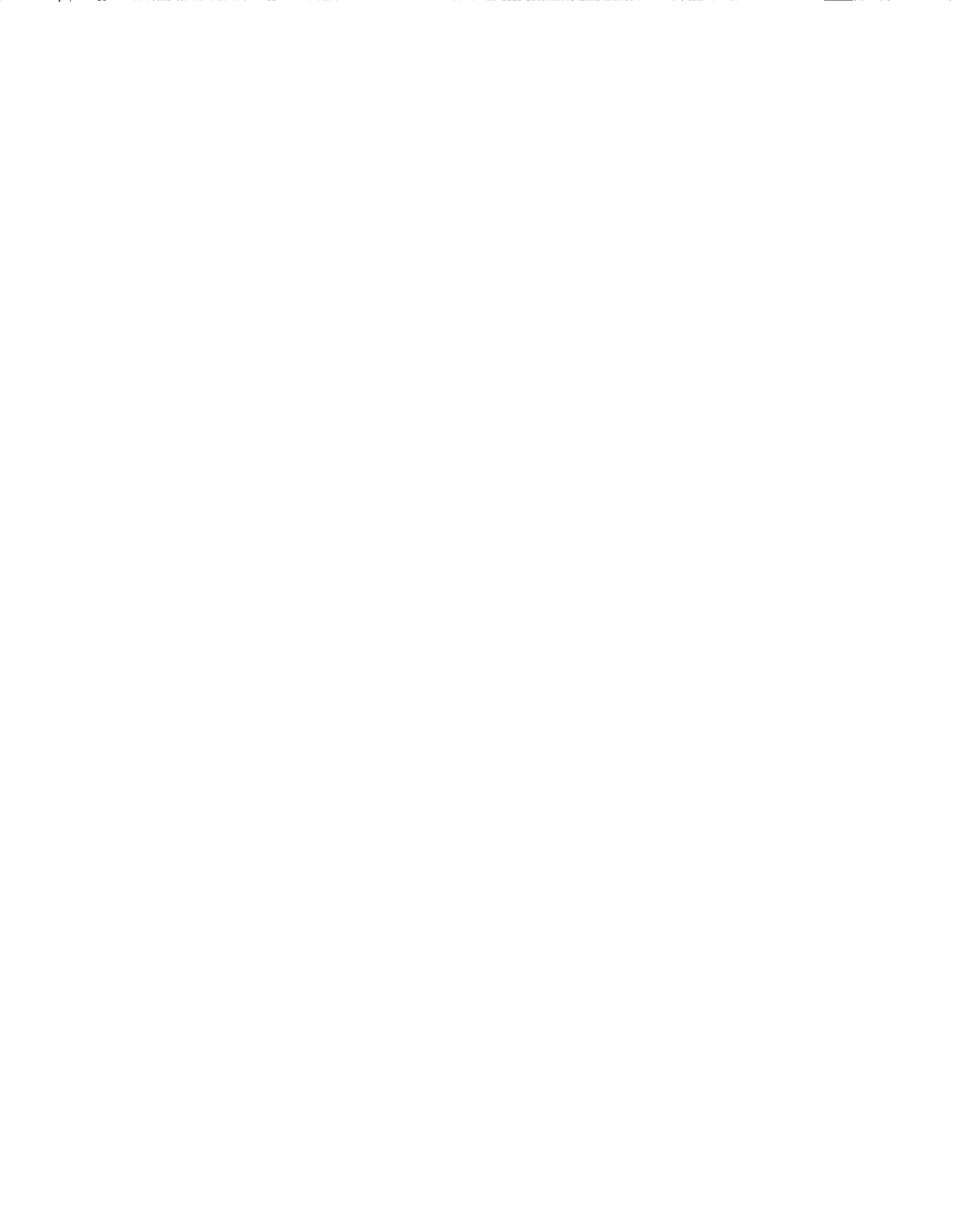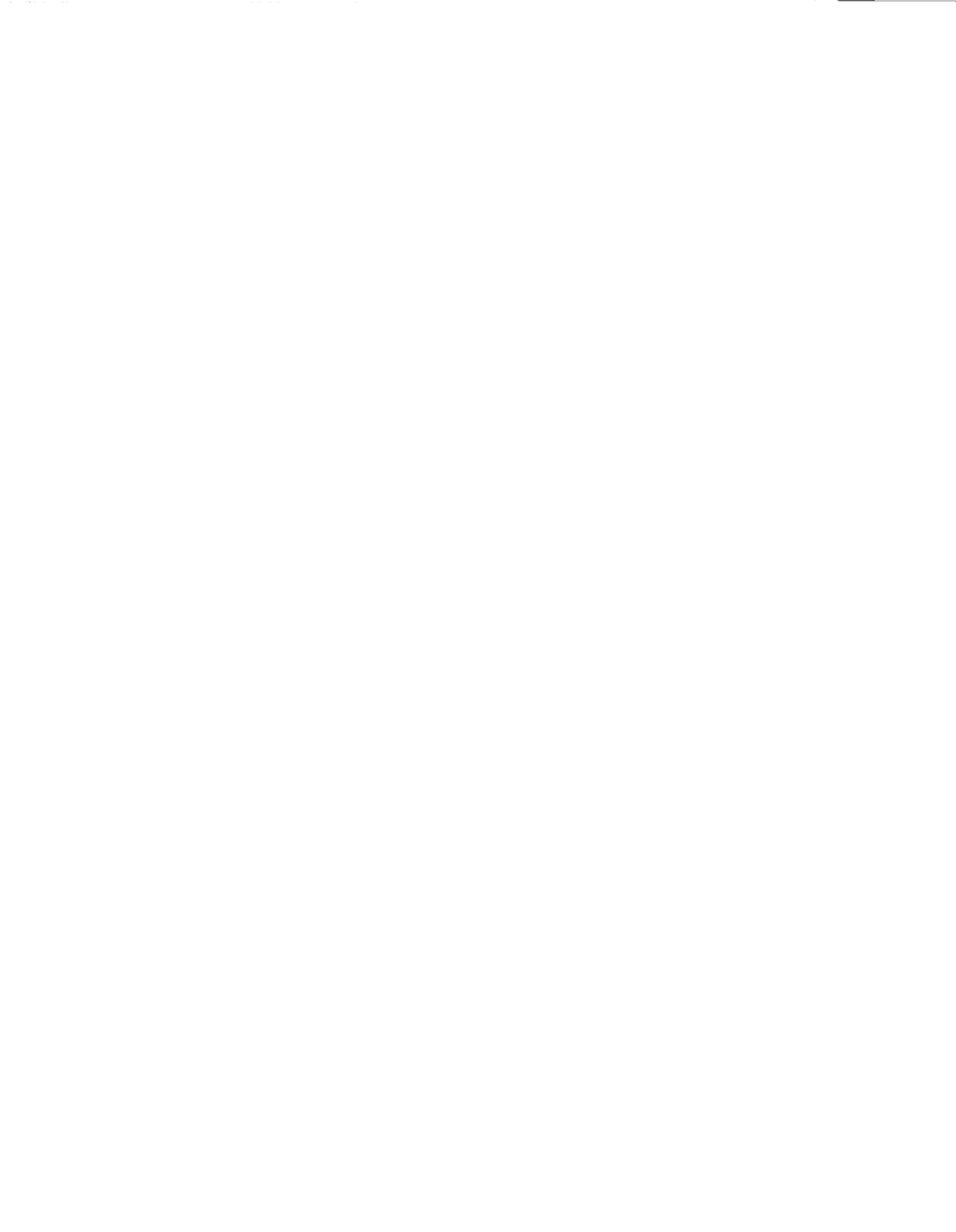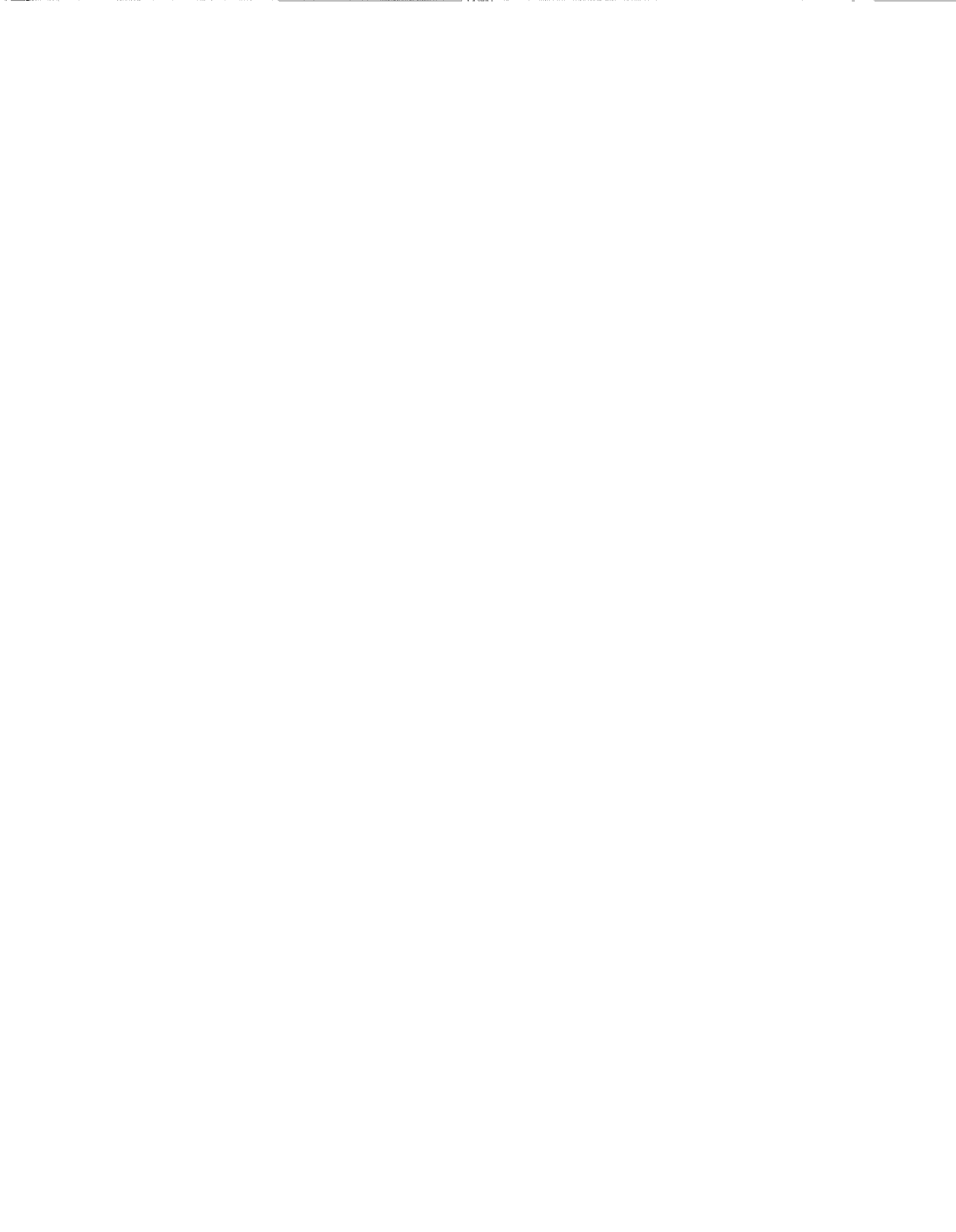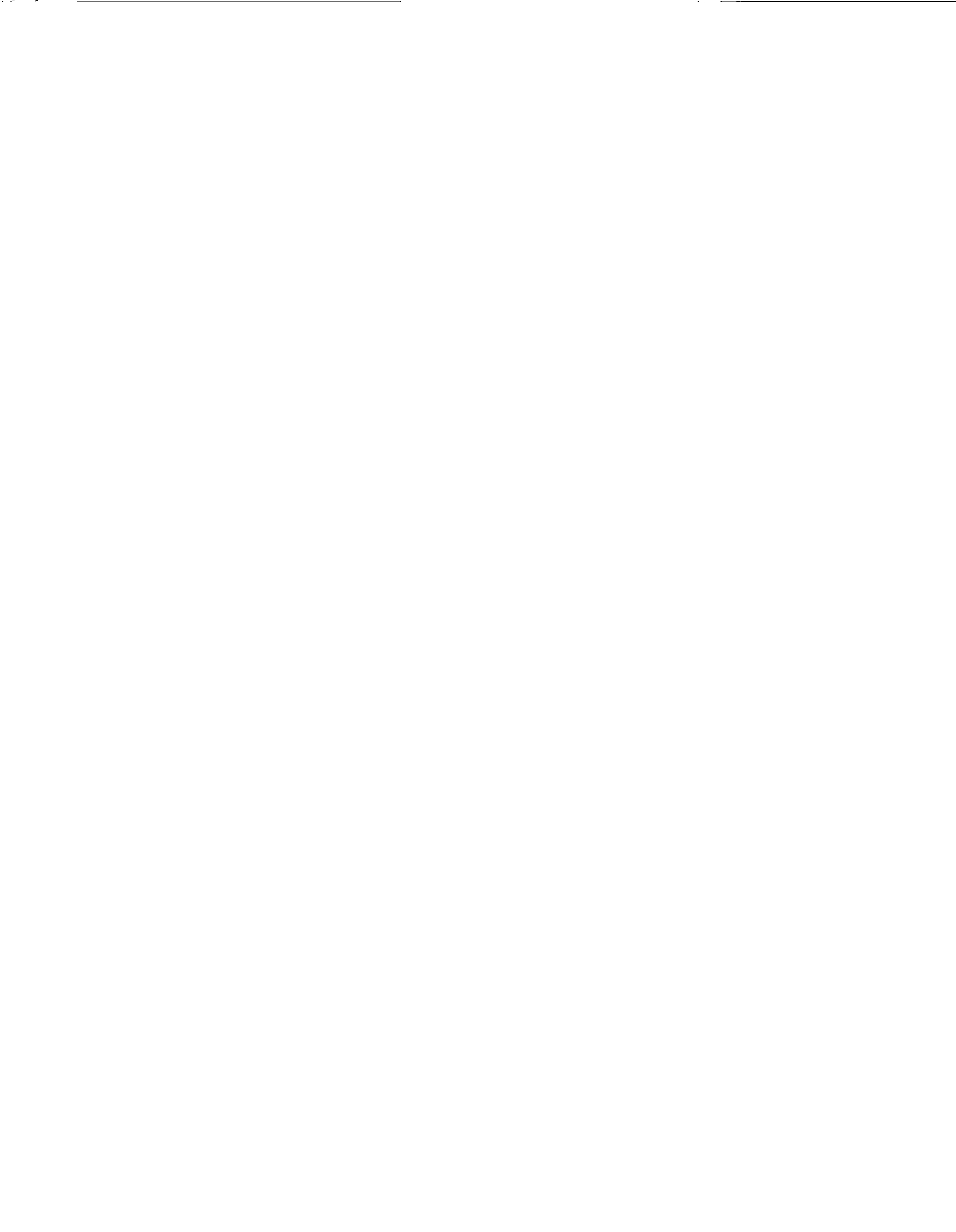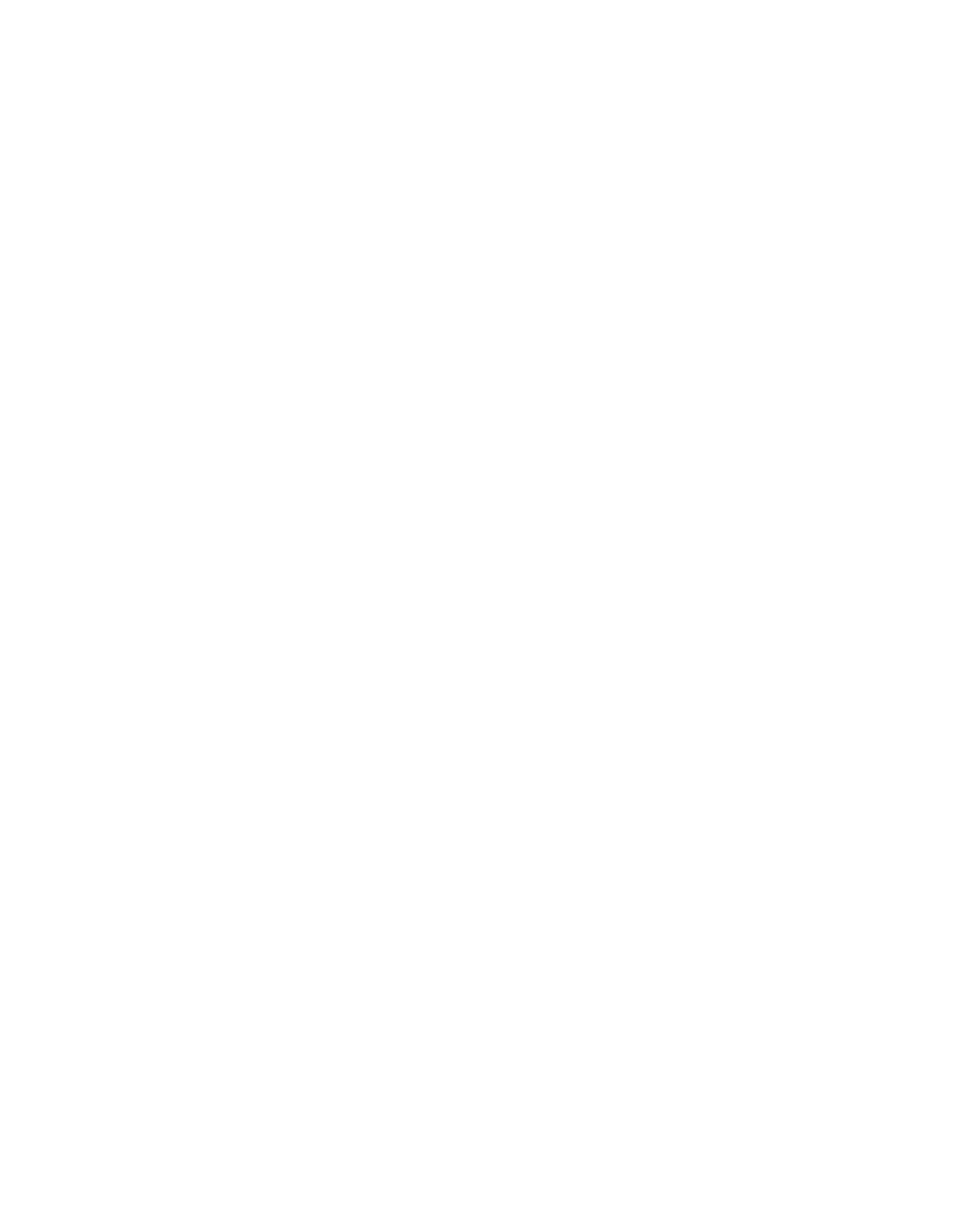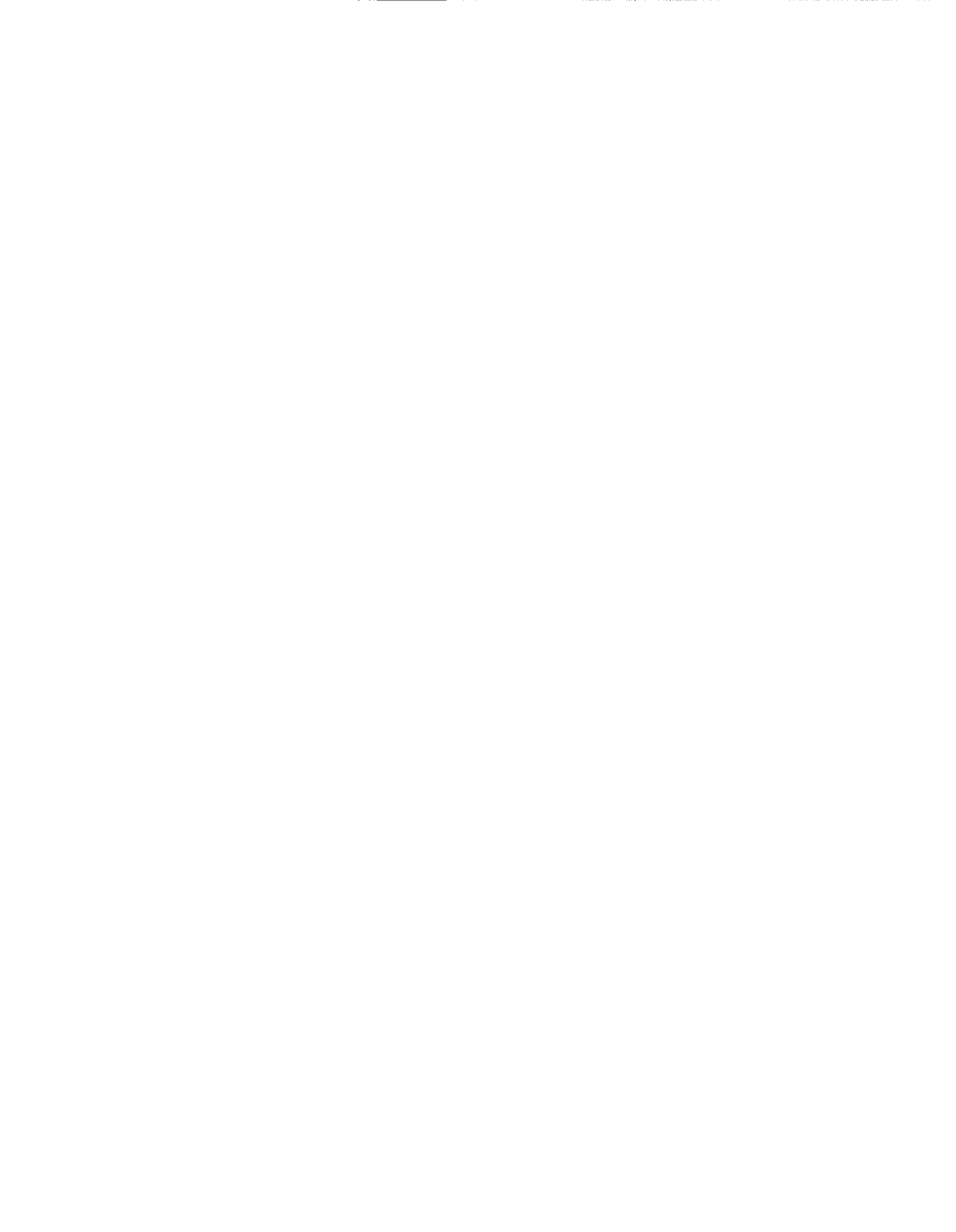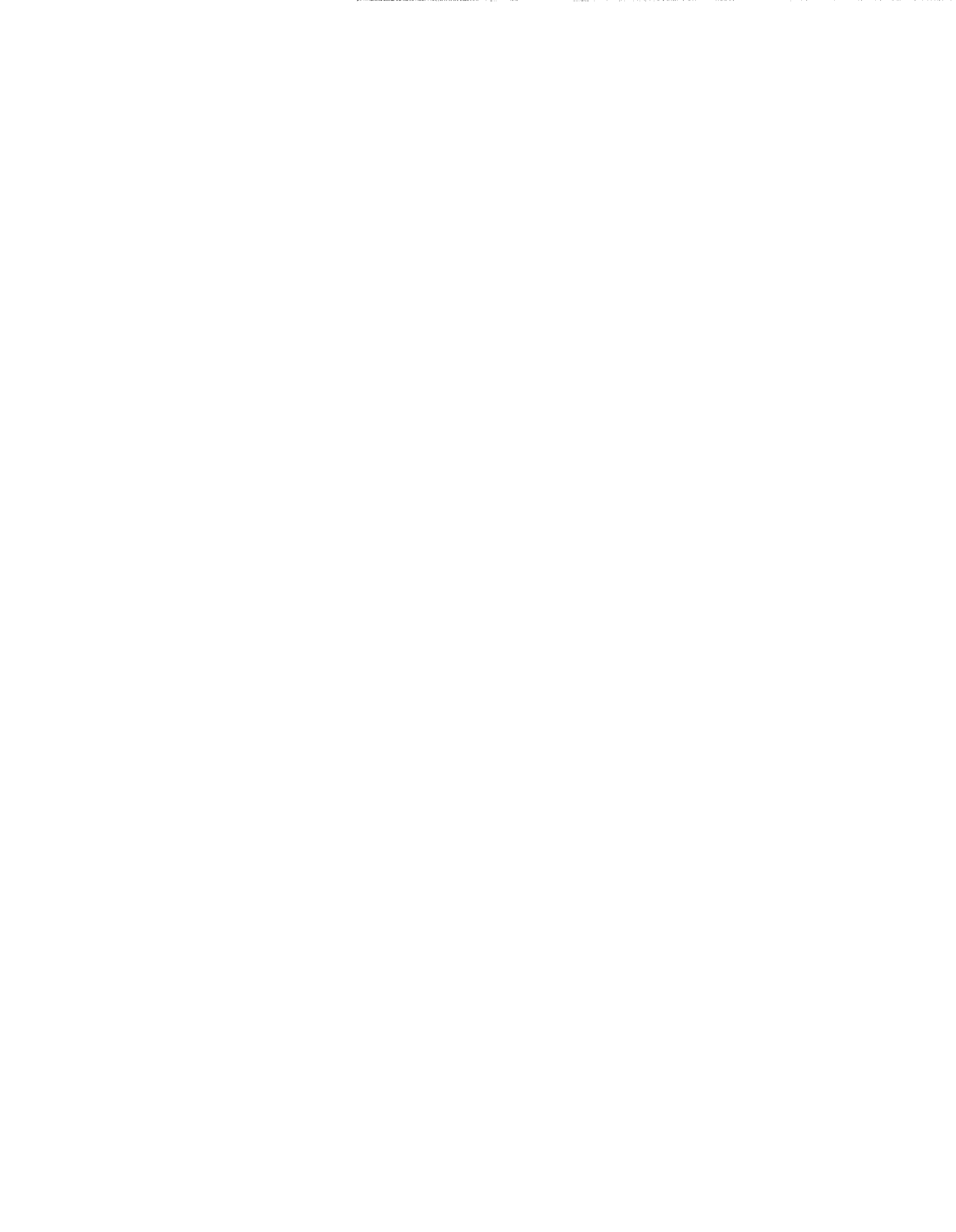RECE~VE
ERK S OFFICE
APR 122005
ILLINOIS REGISTER
PoJftjtSTATE
ion
O~
(DOntroi
ILLINOIS
Board
POLLUTION CONTROL
BOARD
NOTICE OF PROPOSED RULEg
1)
Heading ofPart: Measurement Procedures for the Enforcement of35 Ill. Adm. Code 900
&901
2)
Code Citation: 35 111. Adm. Code 910
3)
Section Numbers:
Proposed Action:
910.100
New Section
910.102
New Section
910.103
New Section
910.104
New Section
910.105
New Section
910.106
New Section
910.107
New Section
9
10~APPENDIXA
91O~TABLEA
NewSection
910.TABLE
B
New Section
910.TABLE C
New Section
910.TABLE D
New Section
4)
Statutory Authority:
415
ILCS 5/25 and 27.
5)
A Complete Description ofthe Subjects and Issues Involved: This rulemaking is
explained in more detail in the Board’s first notice opinion and order ofMarch 17, 2005,
R03-09, available from the address in item 11 below. The Illinois Pollution Control
Board opened this rulemaking to update Parts 901 and 910 ofits noise regulations found
in 35 Ill. Adm. Code Subtitle H. As no one proposed updates to the Board since 1987,
many ofthe sound measurement definitions and techniques in the Board’s existing rules
do not reflect present scientific standards. This is the second publication offirst notice
for this rulemaking; the Board withdrew its initial proposal (published on July 25, 2003 at
27 Ill. Reg. 11989) after deternrining that additional hearings should be held in the noise
ruiemakings in order to address issues that have been raised in public comments.
The proposed new Part 910 sets forth the measurement procedures for enforcing the
Board’s noise standards in Parts 900 and 901. These procedures are essentially based
upon the Illinois Environmental Protection Agency’s noise measurement protQcols at 35
Ill. Adm. Code 951. In addition to the measurement techniques, the proposal contains
general requirements and specific instrument requirements. The proposed Appendix A
includes tables (obtained from extensive measurements) that can be used to determine the
ILLINOIS REGISTER
2
05
POLLUTION CONTROL BOARD
NOTICE OF PROPOSED RULES
long-term background ambient noise levels in instances where direct measurements
caimot be made.
6)
Will this proposedrule replace any emergency rule currently in effect? No
7)
Does this rulemaking contain an automatic repeal date? No
8)
Does this proposed rule contain incorporations by reference? No, but this rule does
reference materials incorporated by reference at 35 Ill. Adm. Code 900.106.
9)
Are there any other proposed amendments pending on this Part? No
10)
Statement ofStatewide Policy Objectives: These proposed amendments do not create or
enlarge a State mandate as defined in Section 3(b) ofthe State Mandates Act. 30 ILCS
805/3 (1992).
11)
Time, Place, and Manner in which interested persons may comment on this proposed
rulemaking: The Board will accept written public comment on this proposal for a period
of45 days after the date of this publication. Comments should reference Docket R03-09
and be addressed to:
Dorothy M. Gunn, Clerk
Illinois Pollution Control Board
James R. Thompson Center
100 W. Randolph St.
Suite 11-500
Chicago IL 60601
Address all questions to Marie Tipsord, at 312/814-4925 or tipsorm@ipcb.state.il.us.
Request copies of the Board’s opinion and order in Docket R03-09 from DorothyM.
Guim, at 312-814-3620, or download from the Board’s Web site at www.ipcb.state.il.us.
12)
Initial Regulatory Flexibility Analysis:
A)
Types ofsmall businesses affected: Any small business that engages in noise
consulting orthat emits noise beyond the boundaries ofits property may be
affected by this proposal.
ILLINOIS REGISTER
3
05
POLLUTION CONTROL BOARD
NOTICE OF PROPOSED RULES
B)
Reporting, bookkeeping or other procedures required for compliance: No
changes in the reporting, bookkeeping or other procedures will be required for
compliance with this proposal.
C)
Types ofprofessional skills necessary for compliance: Compliance with this
proposed rulemaking may require the services ofa professional noise consultant
to determine whether any noise it emits beyond the boundaries ofits property
violates these standards.
13)
Regulatory agenda on which this rulemaking was summarized:~January2005.
The full text ofthe Proposed Rules:. begins on the next page:
i~TNOTICE VERSION
JCAR35O91
2
TITLE
35:
ENVIRONMENTAL PROTECTION
APR
122005
3
SUBTITLE H: NOISE
STATE OF ILLINO
4
CHAPTER I: ILLINOIS POLLUTION CONTROL BOARD Pollution COntrol Bo~
6
PART 910
7
MEASUREMENT PROCEDURES FOR THE ENFORCEMENT
8
OF 35 ILL. ADM. CODE 900 & 901
9
10
Section
11
910.100
General
12
9 10.102
Instrumentation
13
910.103
Definitions
14
9 10.104
Measurement Techniques for 35 Ill. Adm. Code 900
15
910.105
Measurement Techniques for 35 Ill. Adm. Code 901
16
910.106
Protocols for Determination ofSound Levels
17
910.107
Measurement Techniques for Highly-Impulsive Sound Under 35 Ill. Adm. Code
18
104~
19
910~PPENDiX~A Tables of Long-Term Background Ambient Noise
20
910~TABLEA
Daytime long-term background ambient Leq levels in decibels by land use
21
categories and
1/3
octave-band level
22
910~TABLEB
Nighttime long-term background ambient Leq levels in decibels by land
23
use categories and ‘/~octave~bandlevels
24
910.TABLE C
Daytime long-term background ambient Leq levels in decibels by land use
25
categories and octave~bandlevel.~,
26
910~TABLB~D
Nighttime long-term background ambient Leq levels in decibels by land
27
use categories and octave~bandleve1~
28
29
AUTHORITY: Implementing and authorized by Sections 25 and 27 ofthe Environmental
30
Protection Act 415 ILCS
5/25
and 27
31
32
SOURCE: Adopted at 29 Ill. Reg.
,
effective_________________
33
34
Section 910.100 General
35
36
This Part specifies the instrumentation to be used when conducting acoustical noise
37
measurements and sets forth the specific acoustical measurement techniques to be employed
38
when conducting time-averaged sound level
(Leq)
measurements. The instrumentation
39
requirements and measurement techniques as more specifically set forth in this Part must be used
40
in determiningwhether a noise source~isin compliance with 35 III. Adni. Code 900 and 901.
41
42
Section 910.102 Instrumentation
43
JCAR35O91 0-0505255r01
44
a)
Sound Measuring Equipment
45
46
1)
An integrating sound level meter used alone or used in conjunction with
47
an octave!,hand or’A~octave4bandfilter set or a real-time sound analyzer
48
(octave~bandor V~octave~.band)must conform with the following
49
standards incorporated by reference at 35 Ill. Adm. Code 900.106:
50
51
A)
ANSI S 1.4— 1983 (R2001) “American National Standard
52
Specification for Sound Level Meters~1,and ANSI S1.4 A
—
1985
53
“Amendment to ANSI S1.4 -~1983.”
54
55
B)
ANSI S 1.11
.~
1986 (R1998) “American National Standard
56
Specifications for Octave-Band and Fractional-Octave-Band
57
Analog and Digital Filters.”
58
59
C)
ANSI S 1.6— 1984 (R2001) “American National Standard
60
Preferred Frequencies, Frequency Levels, and Band Numbers for
61
Acoustical Measurements.”
62
63
D)
ANSI S1.8 -~~1989“American National Standard Reference
64
Quantities for Acoustical Levels.”
65
66
B)
International Electrotechnical Commission, IEC 804-2000
67
Integrating/Averaging Sound level meters.
68
69
2)
A magnetic tape recorder, graphic level recorder or other indicating device
70
used must meet the requirements ofthe Society ofAutomotive Engineers
71
(SAE) Recommended Practice J184 “Qualifying a Sound Data Acquisition
72
System,” November 1998, incorporated by reference at 35 Ill. Adm. Code
73
900.106~,
74
75
3)
The laboratory calibration ofinstrumentation used for acoustic
76
measurement must be traceable to the National Bureau ofStandards, and
77
must be performed no less oftei~than once every 12 months.
78
79
4)
For outdoor measurement4 a windscreen must be attached to the
80
microphone~,
81
82
b)
Weather Measuring Equipment
83
84
1)
An anemometer and compass or other devices must be used to measure
85
wind speed and direction in accordance with the manufacturer’s
86
recommended procedures.
JCAR3 50910-0505255r01
87
88
2)
A thermometer, designed to measure ambient temperature, must be used in
89
accordance with the manufacturer’s recommended procedures.
90
91
3)
A hygrometer must be used in accordance with the manufacturer’s
92
recommended procedures to measure the relative humidity.
93
94
4)
A barometer must be used in accordance with the manufacturer’s
95
recommended procedures to measure the barometric pressure.
96
97
Section 910.103 Definitions
98
99
The definitions contained in 35 Ill. Adm. Code 900.10 1 apply to this Part.
100
101
Section 910.104 Measurement Techniques for
35
Iii. Adm. Code 900
102
103
Sound pressure level measurements are not required to establish a violation of 35 Ill. Adm. Code
104
900.102 (nuisance noise). However, sound pressure level measurements may be introduced as
105
corroborating evidence when alleging a violation of35 Ill. Adm. Code 900.102. If sound
106
pressure level measurements are collected, manufacturer’s instructions must be followed for the
107
equipment used and 35 Ill. Adm. Code 910.105 may be used as guidance in gathering data.
108
109
Section 910.105 Measurement Techniques for 35 Iii. Adm. Code 901
110
111
Sound
pressure level measurements must be obtained in accordance with the following
112
measurement techniques to determine whether a noise source is in compliance with 35 Ill. Adm.
113
Code 901:
114
115
a)
Site Selection
116
117
1)
Measurements may be taken at one or more microphone positions within
118
the appropriate receiving land. Measurement instruments must be set up
119
outdoors within the boundaries ofthe receiving land for the purpose of
120
determining whether a noise source is in compliance with 35 Ill. Adrn.
121
Code 901.
122
123
2)
Measurement instruments must be set up not less than 25 feet (7.6 meters
124
(m)) from the property-line-noise-source. The 25-foot (7.6 m) setback
125
requirement is from the noise source and not the property line unless the
126
noise source is contiguous to the property line.
127
128
3).
.
Other measurement locations may be used for investigatory purposes such
129
as, but not limited to, the following:
JCAR35O91 0-0505255r01
130
131
A)
Determining the extent of noise pollution caused by the source of
132
sound;
133
134
B)
Determining the ambient; and
135
136
C)
Analyzing those acoustical parameters that describe the sound
137
source.
138
139
4)
For measurements of sound sources with no audible discrete tones,
140
microphones should not be set up less than 25 feet (7.6 m) from any
141
reflective surface that)may affect data. Ifmeasurements must be taken
142
within 25 feet (7.6 m), the effect, if any, of the reflective surface on the
143
measured data must be determined.
144
145
5)
For measurements of sound sources with audible discrete tones,
146
microphones must not be set up less than 50 feet (15.2 m) from any
147
reflective surface that~may affect data. Ifmeasurements must be taken
148
within 50 feet
(15.2
m), the effect, if any, ofthe reflective surface on the
149
measured datamust be determined.
150
151
6)
Objects with small dimensions (trees, posts, bushes, etc.) must not be
152
within
5
feet
(1.5
m) of the microphone position. Ifmeasurements must
153
be taken within
5
feet (1.5 m) of such objects, the effect, if any, on the
154
measured data must be determined.
155
156
b)
Instrumentation Set Up
157
158
1)
A tripod must be set at the chosen site. The tripod must be extended to a
159
height between 3 feet 8 inches (1.12 m) and 4 feet 10 inches (1.47 m)
160
above ground.
161
162
2)
A microphone must be attached to the appropriate end ofa 5-foot
(1.5
m)
163
or longer cable and must be affixed to the top ofthe tripod. The other end
164
ofthe cable must be connected to the measuring instrument~
165
166
3)
The angle of incidence ofthe microphone must be adjusted to yield the
167
flattest frequency response in accordance with the manufacturer’s
168
specifications.
169
170
4)
The measuring instrument must be separated from the microphone so as to
171
minimize any influence on the measurements. The cable movement must
172
be minimized during the measurement period.
JCAR35O91O-0505255r01
173
174
c)
Measurement
Site Operation and
Instrument Calibration
175
176
1)
Before taking sound pressure level measurements, measure and record
177
(near the measurement site):
178
179
A)
Wind speed and direction;
180
181
B)
Ambient temperature;
182
183
C)
Relative humidity; and
184
185
D)
Barometric pressure.
186
187
2)
Turn the measuring instrument on and allow the instrument to stabilize.
188
Monitor and record the battery condition ofthe calibrator and all
189
measuring instruments.
190
191
3)
Turn the calibrator on at its appropriate frequency. Allow the calibratorto
192
stabilize and calibrate the measuring system according to the
193
manufacturer’s specifications. After the measuring system has been
194
calibrated, remove the calibrator and attach a windscreen to the
195
microphone.
196
197
4)
Adjust the microphone to the angle ofincidence that will yield the
198
frequencyresponse in accordance with the manufacturer’s specifications.
199
200
5)
Measure the sound pressure level data within the limitations of subsection
201
(d) and according to the manufacturer’s recommended procedures. Other
202
sound pressure levels may be used for investigatory purposes such as, but
203
not limited to, the following:
204
205
A)
Determining the extent ofnoise pollution caused by the source of
206
sound;
207
208
B)
Determining the ambient; and
209
210
C)
Analyzing those acoustical parameters that describe the sound
211
source.
212
213
6)
While sound measurements are being taken, the operator must be
214
separated from the microphone so as to minimize any influence on the
215
measurements.
JCAR35O91 0-0505255r01
216
217
7)
While measurements are being taken, visual and aural surveillance of
218
extraneous sound sources and varying wind conditions must be made to
219
insure that the conditions ofmeasurement are accurately known. Record
220
any variations in these parameters that may affect data. The number and
221
basis for affected data block must be recorded. When using a tape
222
recorder, voice commentary concerning conditions will be recorded on the
223
cue track.
224
225
8)
To minimize wind effects on the microphone, sound measurements must
226
not be taken when the wind velocityis greater than 12 miles per hour
227
(5.4
mlsecond) at the microphone position.
228
229
9)
For the purposes ofdata correction, the ambient sound at the measurement
230
site must be determined by means ofmeasurement or analysis.
231
232
.10)
After taking sound pressure level measurements, remove the windscreen
233
and attach the calibrator to the microphone. Turn the calibrator on at its
234
appropriate frequency. After allowing the calibrator to stabilize, monitor
235
and record the measuring system response. When the measuring system
236
response varies by more than
±
0.5
dB from the most recent field
237
calibration, the sound pressure level measurements obtained since such
238
most recent field calibration cannot be used for enforcement purposes.
239
240
11)
Before removing the calibrator from the microphone, turn the calibrator
241
off Ifthe ambient sound has not been determined by means of
242
measurement, determine
the noise floor ofthe measuring system. Ifthe
243
noise floor is
within 10
dB of the measured sound
pressure level data, such
244
noise floor measurements must be recorded.
245
246
12)
At the end ofthe sound survey, monitor and record the battery condition
247
ofthe calibrator and all measuring instruments. Near the measurement
248
site, measure and record:
249
250
A)
Windspeed and direction;
251
252
B)
Ambient temperature;
253
254
C)
Relative humidity; and
255
256
D)
Barometric pressure.
257
JCAR35O91 0-0505255r01
258
259
260
261
262
263
264
265
266
267
268
269
270
271
272
273
274
275
276
277
278
279
280
281
282
283
284
285
286
287
288
289
290
291
292
293
294
295
296
297
298
299
13)
Record the physical and topographical description ofthe ground surface
within the vicinity ofthe measurement site, survey site location, a
description of the sound source, a diagram ofthe area, the location of
reflective surfaces near the microphone, and the approximate location of
the noise source relative to the microphone position.
14)
A magnetic tape recorder maybe used to preserve the raw data.
Calibration signals must be recorded at the beginning and end of each tape
as well as at intermediate times such as when relocating to a new
measurement site.
Voice commentary concerning local conditions and
affected datablocks must be recorded on the cue track. The original tape
recording must be preserved for subsequent evaluation. Laboratory
analyses maybe performed on magnetic tape recorded field data. A
description ofthe laboratory instrumentation and procedures must be
recorded. Analyses used in the laboratory must be correlated to field
measurement techniques.
d)
Limiting Procedures for Specific Types ofData Acquisition
1)
For measurements ofnon-impulsive sound with
audible discrete tones, ½~
octave~bandsound pressure levels must be obtained in determining
whether a noise source is in compliance with 35 Ill. Adm. Code 901.106.
2)
For measurements ofnon-impulsive sound with no audible discrete tones,
octave~bandsound pressure levels must be obtained in determining
whether a noise source is in compliance with 35 Ill. Adm. Code 901.102
and 901.103.
e)
Correction Factors
Ifnecessary, correction factors rounded to the nearest
Y2
decibel must be applied
to sound pressure level measurements. The correction factors applicable to the
measurement system may include, but are not limited to, corrections for
windscreen interference and the sound pressure level difference between
consecutive field calibrations. Such calibration correction factors must only be
used to make negative corrections (subtraction from the field data). In no case
must such calibration correction factors be added to the measured sound pressure
levels so as to raise the sound pressure level field data. The correction factors
applicable to the measurement site may include, but are not limited to, corrections
for reflective surfaces and ambient sound.
Section 910.106 Protocols for Determination of Sound Levels
JCAR35O91 0-0505255r01
300
301
302
303
304
305
306
307
308
309
310
311
312
313
314
315
316
317
:318
319
320
321
322
323
324
325
326
327
328
329
330
331
332
333
334
335
336
337
338
339
340
a)
The raw data collection procedures for the determination of equivalent continuous
sound pressure level (Leq) are described in this Section using as an example the
determination ofa 1-hour Leq corrected for ambient. The following procedures
must be used:
1)
Using small blocks:
A)
The 1-hour interval is divided into many small blocks oftime so~
that corruption of the data from short-term background, transient
sound and loss of data can be limited to the corrupted or bad
blocks. The block duration in seconds must remain fixed for any
measurement hour. The duration must be neither less than 10
seconds nor greater than 100 seconds. For example, if the block
duration is chosen to be 60 seconds (1 minute), then the data
collection proceeds for 60, 1-minute periods of measurement.
B)
The collected data for each block represents a block duration Leq
(or sound exposure level (SEL)) in octave~bands(or
‘/3 ~
octave~bandsif prominent discrete tones may be present).
C)
Data for any block corruptedby one or more short-term
background transient sounds must be deleted.
D)
After deleting corrupted data blocks, there will be a fixed number
of“good” data blocks remaining. This number is designated as
NPLNS, where PLNS stands forProperty-Line-Noise-Source. These
remaining “good” blocks must be numbered consecutively. The
subscript i is used to denote the numbering of the blocks in time
order after corrupted data blocks have been deleted.
E)
The data for the NPLNS remaining blocks are time averaged on an
energy basis by octave (or V~octave~band)using Equation 1 below.
In this equation, two subscripts are used, ito designate time and j
to designate the specific frequency, either an octave-band or
octave~band. The raw, 1-hour Leq in the /th frequency band is
given by:
Leqi
=
lOlog
1
NPLNS
10”
1~
~°
Equation 1
N
FL NS
i~1
where Leq is the Leq in the jth frequency band for the ith non..
deleted datablock.
JCAR35O91 0-0505255r01
341
342
F)
In terms of SEL, the raw SEL in thejth frequency band is given
343
by:
(SELJ
NPLNS
344
SELJ
=
10log
10
10
Equation 2
345
346
G)
The raw, 1-hour Leq in thejth frequencyband is given in terms of
347
the corresponding SELJ by:
348
349
L~~=SELj+10log~
3600
Equation3
\.
PLNS
)
350
351
Where T is the block duration in seconds, NPLNS is the number of
352
non-discarded datablocks, and 3600 is the number ofseconds in
353
an hour.
354
355
.
2)
Continuous Data Collection:
356
357
A)
The measuring instrument must be adjusted to continuously
358
measure sound pressure and accumulate Leq for each block oftime.
359
For convenience, the hourmay be split into several smaller blocks
360
such as 10, 6-minute blocks or 4, 15-minute blocks, etc.
361
362
B)
A switch on the measuring instrument must be available to inhibit
363
data collection whenever a short-term background transient sound
364
occurs. This switch shall be used to prevent short-term
365
background ambient sounds from corrupting the data.
366
367
C)
Data collection must proceed for one hour. The energy average of
368
the several measured Leqij each weighted by the number ofseconds
369
actually accumulated during the ith block results in the raw, 1-hour
370
Leq in each frequency band given by:
371
1
NPLNS
1~!~:1
372
Leqi
=
10 log
~
10)
Equation 4
TPLNS
1=1
373
374
Where Leqij is the Leq in the jth frequency band for the ith large
375
block. T1 is the actual number ofseconds of “good”~lata
376
accumulated in the ith block oftime (e.g., 6 to 15 minutes); and
377
JCAR3SO910-0505255r01
NPLNS
378
TPLNS =
Equations
379
380
3)
Minimum data collection requirements:
381
382
A)
Initial Measurement Duration. The property-line-noise-source
383
measurements must proceed initially for one hour. Because of
384
correction for short-term background transient sounds, actual
385
reported data collection time T, in seconds, maybe less than 3600
386
seconds (one hour).
387
388
i)
Ifsmall blocks ofdata are used for data collection, then the
389
total measurement duration in seconds, TPLNS~is given by
390
NPLNS T, where T is the length ofeach block in seconds and
391
NPLNS is the number ofnon-discarded blocks. Ifdata
392
inhibition is used for data collection, then TPLNS is the
393
number of non-inhibited seconds during the measurement
394
hour. In either case, TPLNS must be no less than 900
395
seconds.
396
397
ii)
Ifvery few blocks were used for data collection, then the
398
duration of eaCh block, T, may be too long and should be
399
reduced.
400
401
iii)
For either data collection method, sounds considered to be
402
short-term transient may actually be part ofthe long-term
403
background ambient and should be so redefined.
404
405
B)
Extended Measurement Duration. IfTPLNS is less than 900 seconds
406
during the first hour ofmeasurements, the raw data collection
407
procedures must be appropriately modified and new measurements
408
must proceed for an additional hour. IfTPLNS after combining the
409
first and the second hour ofmeasurements is also less than 900
410
seconds, then the raw data collection must continue using the data
411
inhibition method or method employed during the second hour
412
until TPLNS is greater than or equal to 900 seconds.
413
414
4)
Correction for Long-Term Background Ambient Sound:
415
416
A)
The raw 1-hour Leq must be corrected for long-term background
417
ambient sound. The subsection below describes niethods to obtain
418
the long-term background ambient sound level in thejth frequency
JCAR35O910-0505255r01
419
band. The correction is dependent on the difference (in decibels)
420
between the raw, 1-hour,jth band property-line-noise-sourc~:Leqj
421
and corresponding jth band long-term background ambient sound
422
level. The correction to be applied is as follows:
423
424
i)
Ifthe difference between the raw 1-hour Leq and the long-
425
term background ambient sound is larger than 10 decibels,
426
then the correction must be set to 0.
427
428
ii)
Ifthe difference between the raw 1-hour Leq and the long-
429
term background ambient sound difference is less than 3
430
decibels, then thejth frequency-band level, Leqj, must be set
431
equal to 0.
432
433
iii)
Ifthe difference between the raw 1-hour Leq and the long-
434
term background ambient sound is between 3 and 10
435
decibels~thenthe correction given in Table 1 below must
436
be subtracted from the raw, 1-hour property-line-noise-
437
.
source Leqj
438
439
Table I
440
Corrections in dB for long-term
441
background~Yambientsound
442
Difference
Correctiot
(dB)
(dB)
33
4
2.3
5
1.7
6
1.3
7
1.0
8
0.7
9
0.6
10
0.5
443
444
B)
The long-term background ambient corrected level must be the
445
property-line-noise-source Leqi reported for the jth frequency band.
446
447
b)
Obtaining the background ambient sound level:
448
449
1)
The background ambient must be measured for the purposes ofthis
450
Section during a 10-minute interval.
451
JCAR35O91 0-0505255r01
452
2)
Long-term background ambient measurement procedures are similar to
453
procedures to measure the property-line-noise-source itself. Eliminating
454
short-term background ambient transient sounds from the measurement of
455
average long-term background ambient sound proceeds in a manner
456
similar to the measurement ofthe property-line-noise-source emissions
457
themselves. The two methods for measurement are: to divide the 10-
458
minute measurement into short blocks of data, or inhibit data collection
459
when short-term background transient sounds occur. The same method
460
must be used for gathering both the property-line-noise~sourcedata and
461
the corresponding long-term background ambient data. The measurement
462
procedures for each method are given in subsections (b)(3), (b)(4)~and
463
(b)(5)3ofthis Section:
464
465
3)
Using Small Blocks ofData
466
467
A)
The 10-minute measurement of long-term background ambient
468
must be divided into short measurement blocks. The duration of
469
these blocks must remain constant during the entire measurement,
470
both when measuring the long-term background ambient and when
471
measuring the property-line-noise-source. The duration ofthis
472
measurement block in seconds, T, must divide exactly (without
473
remainder) into 600 and must be neither greater than 100 seconds
474
nor less than 10 seconds.
475
476
B)
All data for any measurement block corrupted by one ormore
477
short-term ambient transient sounds must be discarded. The
478
number ofremaining, non-discarded measurement blocks is
479
designated NBA, where
BA
stands forbackground ambient.
480
481
C)
The Leq for each octave~..(or ½~octavei~bandare time-averaged on
482
an energy basis over the NBA remaining measurement blocks to
483
obtain average long-term background ambient Leq per band.
484
Equation 1 (see subsection (a)(1)(E) ofthis Section) is used for this
485
calculation with NBA replacing NPLNS as the number of elemental
486
blocks to be summed. The total duration ofthe measurement in
487
seconds, TBA, is given by NBA multiplied by T.
488
489
4)
Continuous Data Collection~.
490
491
A)
The measuring instrument must be adjusted according to
492
manufacturer’s instructions to continuously measure sound
493
pressure and accumulate (i.e.~record) Leq. A switch must be
494
available to inhibit data collection whenever a short-term
JCAR35O91 0-0505255r01
495
background transient sound occurs, (and on some instruments, a
496
button may be available to delete the most recent, previous data).
497
498
B)
The switches or buttons must be used to prevent short-term
499
background ambient sounds from corrupting the data.
500
501
C)
Data collection must proceed for 10 minutes. The result is the 10-
502
minute, long-term background ambient Leq in each band.
503
504
D)
TBA is the number ofnon-inhibited measurement seconds during
505
the 10-minute measurement period.
506
507
5)
The minimum duration, for either method, TBA must be no less than 150
508
seconds. If TBA is less than 150 seconds, then the measurement ofthe
509
long-term background ambient must continue beyond the original 10
510
minutes and until TBA for the total long-term background ambient
511
measurement is greater than or equal to 150 seconds.
512
513
6)
Measurement Alternatives. The long-term background ambient4rloise
514
should ideally be measured at the potential violation site just before
515
measurement ofthe property-line-noise-source emissions. However,
516
turning offthe property-line-noise-source may not always be possible.
517
The following are a hierarchical order offive procedures for obtaining the
518
long-term background ambient noise. The first four procedures involve~
519
direct measurement; the fifth procedure provides for use oftables of
520
values obtained from extensive measurements. These are not equivalent
521
procedures but are ordered from what is considered to be the most
522
accurate to what is considered to be the least accurate procedure.
523
524
A)
Direct Measurement Procedure~J:With the property-line-noise-
525
source (PLNS) turned off, measure the long-term background
526
ambient noise within the hour before or within the hour after
527
measurement ofthe PLNS emissions at the location where the
528
PLNS measurements are being taken and with the measurement
529
equipment used for the PLNS measurements.
530
531
B)
Direct Measurement Procedure-2: With the PLNS turned off,
532
measure the long-term background ambient during a similar time
533
period in terms ofbackground ambient sound level, within one ~to
534
~24ihours before, orwithin one~to24~hoursafter measurement of
535
the PLNS emissions at the location where the PLNS measurements
536
are being taken and with the measurement equipment used for the
537
PLNS.
JCAR35O91 0-0505255r01
538
539
C)
Direct Measurement Procedure-3:
With the PLNS turned off,
540
measure the long-term background ambient during some other
541
acoustically similar period within one~to~30~daysbefore, orwithin
542
one~to~30~days after measurement of the PLNS emissions. This
543
alternate long-term background ambient measurement time might
544
be a Saturday night or anytime during a Sunday or holiday. The
545
measurements would be made at the location where the PLNS
546
measurements are beingtaken and with the measurement
547
equipment (or like equipment) used for the PLNS measurement.
548
549
D)
Direct Measurement Procedure-4: With the PLNS turned off,
550
measure the long-term background ambient noise during some
551
other acoustically similar period within~3O.td~9Q~days before, or
552
within~30~to~90~daysaftermeasurement ofthe PLNS emissions.
553
These measurements would be made at the location where the
554
PLNS measurements are being taken and with the measurement
555
equipment (or like equipment) used for the property-line-noise-
556
source measurements.
557
558
B)
Tables ofLong-Term Background Ambient Noise. Where none of
559
the alternatives can be used, use the applicable long-term
560
background ambient datataken from Tables A through D in
561
Appendix A ofthis Part. These tables are organized by
562
predominant land use and time ofday (daytime or nighttime).
563
There are separate tables for octave~and ‘/~octave:thands.The
564
background environments presented in the table are based on
565
extensive measurements conducted in the Chicago area and are
566
divided into the five categories given below in accordance with
567
G.L~Bonva11et,“Levels and Spectra ofTraffic, Industrial, and
568
Residential Area Noise,” Journal ofthe Acoustical Society of
569
America, 23 (4), pp 435-439, July~1951;and Dwight E. Bishop and
570
Paul D. Schomer, Handbook ofAcoustical Measurements and
571
Noise Control, Chapter
50,
Community Noise Measurements,
3Tc~
572
Edition, Cyril M Harris, Edito~McGraw-Hill Book Co., New
573
York (1991).
574
575
i)
Category 1: Noisy Commercial’ and Industrial Areas. Very
576
heavy traffic conditions~such as in busy downtown
577
commercial areas, at intersections ofmass transportation
578
and other vehicles~including the Chicago Transit Authority
579
trains, heavy motor trucks and other heavy traffic, and
JCAR35O9 1 0-0505255r01
580
street corners where
rnotor~busesand heavy trucks
581
accelerate.
582
583
ii)
Category 2: Moderate Commercial and Industrial Areas,
584
and Noisy Residential Areas. Heavy traffic areas with
585
conditions similar to subsection (b)(6)(E)(i) ofthis Section
586
but with somewhat less traffic, routes ofrelatively heavy or
587
fast automobile traffic but where heavy truck traffic is not
588
extremely dense, and motor bus routes.
589
590
iii)
Category 3: Quiet Commercial and Industrial Areas, and
591
Moderate Residential Areas. Light traffic conditions where
592
no mass transportation vehicles and relatively few
593
automobiles and trucks pass, and where these vehicles
594
generally travel at low speeds. Residential areas and
595
commercial streets and intersections with little traffic
596
comprise this category.
597
598
iv)
Category4: Quiet Residential Areas. These areas are
599
similar to Category 3 in subsection (b)(6)(E)(iii) ofthis
600
Section but1for this group., the background is either distant
601
traffic or is unidentifiable.
602
603
v)
Category
5:
Very Quiet, Sparse Suburban or Rural Areas.
604
These areas are similar to Category 4 subsection
605
(b)(6)(E)(iv) ofthis Section but are usually in
606
unincorporated areas and~forthis group~thereare few if
607
any near neighbors.
608
609
Section 910.107 Measurement Techniques for Highly-Impulsive Sound Under 35 Ill. Adm.
610
Code 901.104.
611
612
a)
Measurement ofhighly-impulsive sound under
.35
Ill. Adm. Codp 901.104 can be
613
made in two distinct and equally valid ways, namely the general method and the
614
controlled test method.
615
616
b)
General Method: The general method is to measure the 1-hour, A~weightedLeq
617
(not the octave~’or
‘/3
octave~bandlevels) using essentially one ofthe two
618
procedures described in,Sections29lO.105 and 910.106.
619
620
1)
The procedure using small blocks oftime to collect data is as follows:
621
JCAR35O9 1 0-0505255r01
622
A)
The hourmust be divided into small blocks and the A-weighted Leq
623
must be measured for each ofthese small blocks oftime. Leq must
624
be measured for the entire hour but data collection must be
625
inhibited whenever a short-term background transient sound
626
occurs.
627
628
B)
The duration ofeach block must be held constant during the hour.
629
This duration in seconds must divide exactly into 900 and must be
630
neither greater than 100 seconds nor less than 10 seconds.
631
632
C)
The data for any block corrupted by one ormore short-term
633
background ambient sounds must be discarded.
634
635
2)
The continuous data collection procedure is as follows:
636
637
A)
Leq must be measured for the entire hour.
638
639
B)
Data collection must be inhibited whenever a short-term
640
background transient sound occurs.
641
642
3)
Correction for the long-term background ambient must be accomplished
643
using all of the other procedures and requirements enumerated in Section
644
910.105 and 910.106~.These requirementscmust be complied with to
645
determine an A-weighted, 1-hour, background-ambient-corrected Leq for
646
the highly impulsive property-line-noise-source under study.
647
648
c)
Controlled Test Method: For this method, the following procedures niust be used:
649
650
1)
General Measurement Description
651
652
A)
The sound exposure per impulse from each separate individual
653
impulsive.source~ismeasured.
654
655
B)
The total sound exposure per hour from each sourc~isthe sound
656
exposure per event multiplied by the number of events per hour.
657
658
C)
The grand total sound exposure (SE) per houiiris the sum ofthe
659
sound exposures per hour from each ofthe separate individual
660
sources.
661
662
D)
The reported SEL is obtained from the grand total sound exposure
663
(SE) per hour using the following:
664
JCAR3SO91O-0505255r01
665
SEL
=
10 log (SE) + 94~
Equation 7
666
667
E)
The equivalent level, Leq.~.correspondingto a SEL measured or
668
predicted for one hour (3600 seconds) is given by:
669
670
Leq
=
SEL
-
10 log (3600)~
Equation’ 8
671
672
2)
Determination of sound exposure per eventmust be as follows:
673
674
A)
The sound exposure per event from each, separate, individual
675
source~mustbe determined by measuring the total A-weighted
676
sound exposure for about 10 repetitions ofthis source. This set of
677
about 10 measurements may be performed continuously over ‘a
678
short period oftime, or this set ofmeasurements may be performed
679
over a discontinuous set ofmeasurement periods. In either case,
680
the total measurement duration must be less than 100 seconds.
681
682
B)
These separate, individual property-1ine-noise-source~controlled
683
measurements must be free ofany short-term ambient sounds. If
684
any short-term background transient sounds occur during these
685
measurements, then the measurement must be repeated until
686
measurement data, free of any corrupting short-term background
687
ambient sounds, are obtained.
688
689
C)
The total measured A-weighted sound exposure for this group of
690
about 10 repetitions must be corrected for long-term background
691
.
ambient by subtracting the A-weighted long-term background
692
ambient sound exposure. The sound exposure value subtracted
693
must be the long-term A-weighted background ambient sound
694
exposure per second multiplied by the number of seconds used to
695
measure the several s~uroe~repetitions.
696
697
D)
The reported source~A-weightedsound exposure per event must be
698
the total corrected sound exposure divided by the number of ~öurc.e
~‘
699
repetitions measured.
700
701
E)
The background ambient must be measured for a short time, at
702
least 30 seconds as near in time to the sourc~measurementsas
703
possible, but within
Vz
hour. The total A-weighted long-term
704
background ambient sound exposure per second is the total
705
measured long-term background ambient sound exposure divided
706
by the number ofseconds ofbackground ambient measurement.
707
JCAR35O9 1 0-0505255r01
708
F)
There must be no short-term background ambient sounds present
709
during the measurement ofthe long-term background ambient. If
710
any short-term background transient sounds occur during these
711
measurements, then the measurements must be repeated until long-
712
term background ambient measurement data free of any corrupting
713
short-term background ambient sound are obtained.
JCAR35O91O-0505255r01
714
910.APPENDIXA Tables ofLong-Terrn~BackgroundAmbient Noise
715
716
910.TABLEA. Daytime long-term background ambient Leq levels in decibels by land use
717
categories and 1/3 octave-band level
718
Background Category
Octave-Band Center
1
2
3
4
5
Frequency (Hz)
20
63
56
48
42
36
25
64
57
49
43
37
31
65
58
50
44
38
40
65
58
51
44
38
50
66
59
51
45
39
63
66
59
52
46
40
80
67
60
52
46
40
100
68
60
53
47
41
125
67
59
52
46
40
160
66
59
52
46
40
200
66
58
51
45
39
250
65
58
50
44
38
315
64
57
49
43
37
400
63
55
48
42
36
500
62
54
46
40
34
630
61
53
44
38
32
800
60
51
42
36
30
1000
58
49
40
34
28
1250
56
47
38
32
26
1600
54
45
36
30
24
2000
52
43
33
28
21
2500
50
41
30
25
19
3150
49
39
28
23
17
4000
48
37
25
20
15
5000
46
35
23
18
13
6300
44
33
21
16
10
719
JCAR3SO9 1 0-0505255r01
8000
43
31
19
14
8
10,000
41
29
17
12
6
12,500
39
27
15
10
4
JCAR3 5091 0-0505255r01
720
910.APPENDIXA Tables of Long-Term Background Ambient Noise
721
722
910.TABLE B. Nighttime long-term background ambient Leq levels in decibels by land use
723
categories and 1/3.~octave~bandlevel ~
724
Background Category
Octave-Band Center
1
2
3
4
5
Frequency (Hz)
20
53
48
43
37
31
25
54
49
44
38
32
31
~5
50
45
39
33
40
55
50
46
39
33
50
56
51
46
40
34
63
56
51
47
41
35
80
57
52
47
41
35
100
58
52
48
42
36
125
57
51
47
41
35
160
56
51
47
41
35
200
56
50
46
40
34
250
55
50
45
39
33
315
54
49
44
38
32
400
53
47
43
37
31
500
52
46
41
35
29
630
51
45
39
33
27
800
50
43
37
31
25
1000
48
41
35
29
23
1250
46
39
33
27
21
1600
44
37
31
25
19
2000
42
35
28
23
16
2500
40
33
25
20
14
3150
39
31
23
18
12
4000
38
29
20
15
10
5000
36
27
18
13
8
6300
34
25
16
11
5
725
JCAR3 50910-0505255r01
8000
33
23
14
9
3
10,000
31
21
12
7
1
12,500
29
19
10
2
JCAR35O910-0505255r01
726
910.APPEND1X A Tables of Long-Terni Background Ambient
Noise
727
728
910.TABLE C Daytime long-term background ambient Leq levels in decibels by land use
729
categories and octave~band leveL;
730
Background Category
Octave-Band Center
1
2
3
4
5
Frequency (Hz)
31
70
63
55
49
43
63
71
64
57
51
45
125
72
64
57
51
45
250
70
63
55
49
43
500
67
59
51
45
39
1000
63
54
45
39
33
2000
57
48
38
33
26
4000
53
42
30
25
20
8000
48
36
24
19
13
731
JCAR35O9 1 0-0505255r01
732
910.APPENDIX A Tables of Long-Term Background Ambient Noise
733
734
910.TABLE D Nighttime long-term background ambient Leq levels in decibels by land use
735
categories and octave~bandleveh
736
737
Background Category
Octave-Band Center
1
2
3
4
5
Frequency (Hz)
31
60
55
50
44
38
63
61
56
52
46
40
125
62
56
52
46
40
250
60
55
50
44
38
500
57
51
46
40
34
1000
53
46
40
34
28
2000
47
40
33
28
21
4000
43
34
25
20
15
8000
38
28
19
14
8
738
